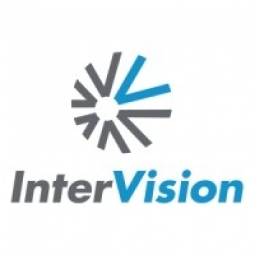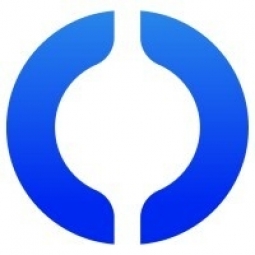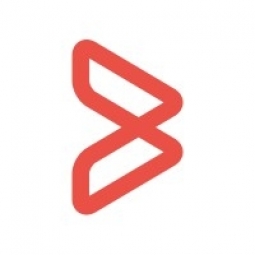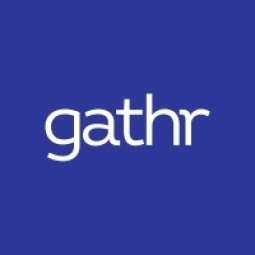Case Studies.
Add Case Study
Our Case Study database tracks 22,657 case studies in the global enterprise technology ecosystem.
Filters allow you to explore case studies quickly and efficiently.
Download Excel
Filters
-
(407)
- (253)
- (84)
- (60)
- View all
-
(324)
- (201)
- (103)
- (25)
- View all
-
(265)
- (139)
- (39)
- (31)
- View all
-
(263)
- (120)
- (84)
- (74)
- View all
-
(251)
- (212)
- (70)
- (32)
- View all
- View all 13 Technologies
- (159)
- (114)
- (103)
- (101)
- (98)
- View all 42 Industries
- (1,315)
- (322)
- (154)
- (138)
- (124)
- View all 13 Functional Areas
- (558)
- (433)
- (294)
- (182)
- (153)
- View all 71 Use Cases
- (915)
- (405)
- (380)
- (231)
- (78)
- View all 8 Services
- (64)
- (64)
- (64)
- (51)
- (44)
- View all 191 Suppliers
Selected Filters
|
|
Owens Corning Standardizes on Aspen Plant Scheduler and Receives Rapid Deployment Results
Owens Corning, a global leader in insulation, roofing, and fiberglass composites, aimed to implement a scheduling solution for its roofing and insulation manufacturing businesses. The goal was to eliminate legacy tools and quickly provide a solution that met the distinct challenges of each business. For the roofing business, the challenges included modifying scheduling settings for products and periods of supply, and using a product wheel for the sequencing of products that consider changeover considerations in the setup mix. For the insulation business, the challenges were to minimize raw materials waste when manufacturing different SKUs of insulation, determine the best co-products to make that will meet demand and minimize excess trim, and schedule long runs that promote steady-state operations and reduce the need for changeovers.
|
|
|
|
|
Perstorp Develops KPI Production Portal to Focus Organization on Meeting Plant Production Targets
Perstorp, a global leader in the specialty chemicals market, wanted to visually understand in near real time how well their plants were meeting production goals relative to targets. They needed a system that could deliver important production KPIs, such as “Loss vs. Plan”, and allow the user to analyze production results in more detail. The company also wanted to implement features like automated emails and/or phone text messages that could be triggered either by events, such as plant shutdowns, or time-based (e.g. weekly reporting), which could be used for automatic ordering of some raw materials and predictive maintenance.
|
|
|
|
|
Software Project Enriches Controls and Culture
SMART Modular Technologies’ 10-year-old memory chip back-end plant in Brazil was stepping up to implement a modern comprehensive manufacturing execution system (MES). The timing was to succeed as a second source for a new product and more to come. As SMART continued its thrust into the mobile market for memory, they recognized that the current controls would no longer suffice. The plant was using an internally-developed WIP tracking system plus Excel and paper. This system did not provide close yield monitoring. SMART could not easily analyze data to prevent defects. Lot traceability was a manual and tedious task, and operators had to choose the right tools and recipe. With new products and more volume, this would not be sufficient. So in 2013, the Atibaia IC facility began looking for a system that would do far more than its current software.
|
|
|

|
Deliver Results in Productivity: Richards Industries Case Study
Richards Industries, a parent company of six distinct industrial product lines, has been affected by the decline of crude oil, a key source of energy, which has created opportunities and threats for American manufacturing. The company's business has been slowed by the Oil and Gas reductions but has continuously invested in new product development, process improvements, lead time reduction, on-time shipments and quality. Richards Industries practices Lean Management philosophies for almost two decades. Investment in training and technology is key to retain talent and control cost. The company is dedicated to finding ways to improve manufacturing processes, existing products, creating new products, reaching new markets and responding faster to customers.
|
|
|

|
Dynomax Aerospace Supplier +20% OEE in 3 MONTHS
The global aerospace industry is experiencing rapid growth, with a focus on production efficiency for both commercial and military projects. Aerospace suppliers like Dynomax and other manufacturers in the supply chain understand that staying ahead of the competition and meeting the growing need for finished products requires leaner production through technological investment. Dynomax, an aggressively growing aerospace supplier, rises to the challenge of smarter production and proactively drives greater capacity, speed to market, and overall competitiveness. The team determined that the performance of machines needed to be measured in real time to quickly recognize and correct errors, reduce waste and continuously optimize productivity. Key challenges included the collection of OEE / KPIs, full production transparency, identification of bottlenecks, Epicor ERP integration, machine utilization, and reduction in machine downtime.
|
|
|

|
The Balance of Flexibility and Security with BeyondTrust
Ramboll, a Danish engineering, architecture, design, and consultancy firm, faced challenges in standardizing IT policies and procedures across its global offices due to its growth through mergers and acquisitions. The company had a high number of applications in use, with each country handling access privileges and admin rights differently. This resulted in an overburdened local IT team and a lack of visibility and control at the global level. The company also faced cybersecurity threats and needed to manage software licenses effectively. The challenge was to find a solution that would not only bolster and standardize application control and privileged management across the organization but also ensure license compliance and software standardization.
|
|
|

|
Privileged Remote Access Drives Security & Simplification
MANE, a leading flavor and fragrance group in France, was facing the challenge of preserving its business model and maintaining the secrecy of its formulas in a fast-evolving world where workplaces are experiencing accelerated digital transformation and relying more heavily on remote workers. The company needed to rethink its growth strategy and improve its IT infrastructure. They sought a secure solution to enable productivity for its modern work environment while ensuring its trade secrets stay secret. The company also needed to improve data and information system security by enhancing access controls, privilege management, and visibility over its numerous third-party suppliers and systems managers.
|
|
|

|
F5 Networks DevCentral Online Community Site Improves Performance and Agility with Bluelock Virtual Datacenters
F5 Networks, a Seattle-based application delivery networking vendor, runs a technical user community site called DevCentral. This site is a platform where over 100,000 global IT professionals collaborate with peers to enhance and create solutions to better deliver applications. DevCentral is a key competitive differentiator for F5, the recognized market share and innovative leader in its space. However, the success of DevCentral created some challenges that needed to be addressed. The biggest challenge was the ever-increasing number of users, applications, and modules. The more successful it became, the more the needs of every component grew. There were more users and internal customers, but also more globally-distributed users. There were also more security risks stemming from social application complexity and the open source framework. The DevCentral team identified clear changes that would be required to be made due to the stress on the system. They needed an improved understanding of application and infrastructure dependencies, better performance, and a manageable security plan.
|
|
|

|
Spark R&D Turbocharges Its Production Process with Fishbowl Manufacturing
Spark R&D, a company that designs and manufactures splitboard-specific bindings, was facing challenges with its inventory and order fulfillment system. The company was struggling to keep track of its inventory and fulfill orders on schedule. The existing system was informal and closed, with only one person having access to the inventory spreadsheet. This lack of visibility and communication between departments was causing delivery problems. The company was unable to get products out the door until well past their target date. They needed a system that could provide visibility across departments and handle the increasing complexity of their operations.
|
|
|

|
BEX Sunglasses Sees the Light and Returns to Fishbowl After Learning It's the Best Option Available for Small Businesses
BEX, a Las Vegas-based manufacturer of sunglasses and other accessories, was struggling with inventory management. They were manually tracking sales and inventory in Excel spreadsheets, which was time-consuming and prone to errors. Different departments within the company were acting independently without communicating inventory needs, leading to inefficiencies. Physical inventory checks and counts were a painstakingly long process. The company initially tried Fishbowl Manufacturing, an advanced inventory management system, but found it a bit beyond their needs as a young startup. They switched to a more watered-down solution, but soon realized that it was limited and not meeting their needs.
|
|
|

|
Fishbowl Helps Chung’s Become More Efficient and Effective
Chung’s Gourmet Foods, a leading producer of Asian entrées and snacks in the United States, was facing several challenges due to outdated technology. Their existing systems were running on DOS and Excel spreadsheets, which were unreliable and required everything to be checked and rechecked before distribution. The company's annual closing cycle took about a month to complete and the system did not allow for retrieval of prior period information. All of Chung’s systems from purchasing to receiving payments were manual. Only one person in the company knew how to fix the DOS system when it went down, and he only worked three days a week. To keep up with rapid growth, Chung’s needed to either continually hire new employees or find a program that could automate processes and reduce the need for additional labor expenses.
|
|
|

|
Dairy Mix Company Uses Fishbowl to Manage Production and Distribution of Sweet Treats
Pacific Valley Dairy, a producer and distributor of ice cream mixes and related supplies, faced a significant logistical challenge. With over 400 locations throughout the Midwest and as far south as Florida, the company needed a way to manage and track its raw materials, finished products, and distribution. The company had been using QuickBooks for its day-to-day business operations since its inception three years ago. However, they quickly realized that QuickBooks alone did not have the capabilities to manage the company's inventory and distribution requirements. They needed a stronger system that would integrate well with QuickBooks.
|
|
|

|
Fishbowl is a Perfect Fit for Tunaskin Aquatic Apparel, Leading to More Online Sales and Greater Efficiency in Manufacturing
Tunaskin Aquatic Apparel, a company that designs clothing for aquatic sports, was in need of a powerful inventory management solution that could keep up with their comprehensive operations. The company manufactures, wholesales, and also operates brick-and-mortar stores and an online platform. They were looking for a system that could grow with them and help manage all these aspects of their business. They wanted to have a system in place that could help them track their finished goods and know the right times to restock.
|
|
|

|
Mary’s Medicinals Uses Fishbowl Manufacturing to Fine-Tune Their Business Processes and Improve Production and Sales
Mary’s Medicinals, a leading manufacturer and wholesaler of cannabis-based nutraceutical products, was facing challenges with their inventory management. They had to manually count inventory each week, which was causing problems when it came to accurately forecasting material and production needs. The company needed a tool that could automate this process and provide accurate forecasts. Additionally, they needed to track the potency of the cannabis oil they used in their products, not just its volume.
|
|
|

|
Fishbowl® Helps Prince Michel Flow from Crisis Management to Informed Pricing, Production Planning, and Sales Fulfillment
Prince Michel Vineyard & Winery, one of Virginia’s oldest and largest wine producers, was facing significant challenges with its existing systems. The company was using QuickBooks, which was inadequate for their needs, particularly in managing multiple warehouses and bill of materials. The company was also facing procedural problems, such as all manufacturing inventories being expensed upon purchase, then looped back to cost of manufacture at a later date. This practice, along with other workarounds and estimates, resulted in meaningful financial statements but only months after the year was over. The company was also struggling with inventory accuracy, stockouts, and the inability to produce timely, accurate cost-to-manufacture information in-house.
|
|
|

|
Automating Forecasting and Capacity Checks for a Global Automotive Supplier
The customer, a leading global supplier to the automotive and industrial sectors, was facing significant challenges in managing the quality and accuracy of OEM forecasts. The company was unable to leverage external market drivers to predict demand and was heavily reliant on Excel. This resulted in high variability in the quality and accuracy of forecasts. Additionally, there was a lack of demand alignment across OEM forecasts, which were stored in multiple Excel sheets. The company also had access to external market data from providers such as IHS, but was unsuccessful in leveraging this data to improve demand planning. Furthermore, capacity checks were done manually in Excel, which resulted in the lack of a layer of intelligence on top of the execution system (SAP APO).
|
|
|

|
Global Health Service Company
A Global Health Service Company (GHSC) was managing an enterprise-wide DevOps initiative that included mainframe applications teams. The company wanted an integrated IDE for mainframe developers that included program analysis and an intelligent editor that could provide immediate feedback on code changes as developers edit the code. The GHSC is a licensed user of SonarSource products for distributed source code syntax checking. Their management desired similar capabilities for their mainframe DevOps efforts. Quick and immediate feedback on code errors would reduce rework, reduce the number of compiles and improve the quality of COBOL programs released to production. They also wanted their mainframe developers to use similar capabilities and tooling as their distributed systems counterparts.
|
|
|

|
Topaz is Key for Insurance Company to Manage Complex Mainframe Code
Physicians Mutual, an insurance company, was struggling with the management of millions of lines of complex mainframe code. The lack of documentation and tools to manage this code led to long development cycles, preventing the company from capitalizing on critical business opportunities. The complexity of the mainframe code and the absence of tools to manage it resulted in missed opportunities to capitalize on immediate business interests. The company needed a solution that would help them understand and manage their complex applications, speed up maintenance and development cycles, and attract and retain top developer talent.
|
|
|

|
Power massive scale, real-time data processing by modernizing legacy ETL frameworks
Enterprises need to analyze large volumes of data from various sources in real-time to make strategic business decisions. They often create custom frameworks to process these large data sets, which can lead to technical debt and dependency on IT teams who understand the historical choices made during the initial platform designs. This can risk impacting businesses and increase customization costs. The customer, a leading security and intelligence software provider, wanted to modernize their existing big data applications. They were looking for an easy-to-use and scalable solution that could process 1.5 billion transactions generated per day from multiple real-time feeds. They needed a near-zero-code solution for ETL processing jobs that could perform real-time ingestion and complex processing, ensure high throughput while indexing and storing, and detect anomalies in transactions.
|
|
|

|
NetApp Leverages Iguazio for AI-Driven Predictive Maintenance
NetApp, a leading provider of hybrid cloud data services, needed to enhance its Active IQ solution to incorporate an AI-driven digital advisor. The goal was to use AI to gain intelligent insights into its customers’ storage controllers and deliver prescriptive guidance, as well as automate “best actions” to achieve predictive maintenance on said devices. The company was dealing with the challenge of analyzing 10 trillion data points per month from storage sensors worldwide. The existing infrastructure of Active IQ, built on Hadoop, was unable to cost-effectively enable real-time predictive AI, run large-scale analytics, or deploy new AI services at scale. The traditional data warehouse and Hadoop-based data lake were unable to efficiently process the trillions of data points collected from storage controllers at the speed required to derive actionable intelligence needed for real-time predictive maintenance.
|
|
|

|
Hygiene technologies leader Ecolab brings data science to production with Microsoft Azure and Iguazio
Ecolab, a global leader in water, hygiene, and infection prevention solutions, wanted to develop predictive risk models for water systems, industrial machinery, and other applications. The company's machine learning journey began in 2016 with a project to develop bacterial growth risk models using existing sensor data. However, the process of building, deploying, and maintaining machine learning models in production was complex and challenging. The company needed a data science collaboration platform that would bring together its large, geographically dispersed team, while efficiently using cloud computing resources. The deployment of machine learning models at Ecolab followed a 'rewrite-and-deploy' pattern, where model development occurred independent of the application developers. This approach led to deployment timelines exceeding 12 months on average.
|
|
|

|
High-Tech Products, High-Tech Forecasting
Fujitsu Network Communications, a provider of diverse range of products to the telecommunications and cable industries, was facing challenges in accurately forecasting demand and responding efficiently to changing customer needs. The company was using spreadsheets for all its forecasting and planning, which was a time-consuming and labor-intensive process involving around 25 people and taking about six weeks to produce a 12-month rolling forecast. This process was not providing their suppliers with the visibility they needed. Fujitsu wanted to reduce the number of people involved in the process, produce an 18-month rolling forecast every month, and improve forecast accuracy.
|
|
|

|
Bouncing Back
Fairchild Semiconductor, a major player in the semiconductor industry, faced significant challenges following the global financial crisis in 2008 and 2009. The industry experienced an unprecedented downturn, followed by a dramatic upturn in customer demand, driven by computing and mobile technologies. Fairchild Semiconductor had to deal with extremely volatile demand, a global shortage of manufacturing capacity, growing lead times, and scarce supply. The company reported first quarter 2010 sales of $378 million, up 7 percent from the prior quarter and 69 percent higher than the first quarter of 2009. To offset this increase in demand, Fairchild Semiconductor needed to increase manufacturing capacity and capabilities with minimal capital investment.
|
|
|

|
The Flexible Supply Chain
SanDisk Corporation, a global leader in flash memory storage solutions, needed to increase its supply chain flexibility and responsiveness to customer demand. As the company's business grew, it needed to migrate from homegrown, spreadsheet-based planning tools to robust, scalable solutions that would support its expanding original equipment manufacturer (OEM) channels and retail presence. SanDisk sought an integrated advanced planning solution that would help the company maintain profitable growth and maximize its margins while continuing to meet customer demand and increase customer satisfaction.
|
|
|

|
Charlotte Russe Leverages JDA’s Retail Solutions to Meet Its Customers’ Fashion Needs Across All Channels
Charlotte Russe, a rapidly growing retailer, operates more than 500 stores in the U.S. in addition to its online and mobile shopping platforms. The company excels in delivering a differentiated brand experience that embraces the Charlotte Girl’s on-the-go lifestyle. However, the existing system infrastructure and associated business processes were limiting the company’s ability to grow, operate quickly and efficiently, and keep pace with both its customers’ demands and the competitive environment. Prior to the upgrade, the Charlotte Russe team was spending numerous hours each day manually uploading spreadsheets across various functions, which left the team with little time to analyze or act on the data. Due to some inefficient business processes, the company also experienced delays in getting purchase orders to its vendors, a core requirement of its business.
|
|
|

|
On the Right Foot
Grupo Flexi, a leading footwear manufacturer in Mexico, faced increasing complexity in its supply chain as it expanded its product assortment. The company produces over 13 million pairs of shoes annually, with each pair requiring up to 30 different components and several raw materials. One of the most critical materials, leather, has variable lead times ranging from three weeks to three months, depending on the supplier. Flexi sources materials from several countries and distributes them to its manufacturing operations, which include 30 company-owned and subcontracted factories. Eight years ago, Flexi decided to expand its product assortment, introducing new products for different market segments. This initiative increased the complexity of managing more raw materials and stock-keeping units (SKUs), as well as more construction of shoes, which required different specializations and capacities in different factories.
|
|
|

|
Shifting to a Higher Gear
Fiat Chrysler Automobiles (FCA), the world’s seventh-largest auto manufacturer, faced challenges in increasing production speed and consistency due to the growth of global demand for automobiles. The company was running its plants and suppliers at full capacity, which led to capacity chokepoints. Identifying and managing these constraints became a priority for FCA. The company needed a solution that could help them identify these capacity chokepoints as early as possible and work to resolve them, thereby improving the speed of delivery.
|
|
|

|
Driving Increased Vehicle Customization
Delphi Automotive PLC, a key supplier to the world’s leading automakers, faced the challenge of incorporating increased delivery speed and product customization into its operations. The company assembles and delivers critical components to automotive OEM assembly lines, in a predefined sequence at short notice. This is particularly challenging due to the complexity of Delphi’s products. For instance, a single electrical harness may be composed of hundreds of miles of wire, connecting to thousands of points within the vehicle. Delphi recognized the need for an automated decision-support tool to help it support these increasingly complex build-to-order requirements.
|
|
|

|
Chipping Away at Lead Times
Marvell Semiconductor, a $4 billion company based in California's Silicon Valley, manufactures a diverse range of products including storage devices, controllers, routers, switches, gaming devices, multimedia chips, and printers. The company operates in an industry known for its long cycle times, with it taking approximately 14 weeks to build a product from scratch. This poses a challenge as customers generally do not want to wait that long. In order to meet customer requests, Marvell needed solutions to help manage its inventory and position it at the right point in the supply chain. One of Marvell’s key supply chain objectives is to meet – and exceed – its customers’ expectations. It aims to have the right product in the right place at the right time for delivery to the customer. At the same time, it’s important to drive revenue, so the company has to manage its inventory carefully and have a good supply chain in place – one that can be changed rapidly to meet customer requests. This enables Marvell to bring products to market faster, or in certain cases, be flexible enough to shift to a different product when demand changes.
|
|
|

|
Increased Productivity through Automation
Asian Paints’ decorative division produces more than 1,600 standard paint product stock-keeping units (SKUs) and many made-to-order (MTO) formulations. This dynamic production environment requires a sophisticated and robust supply chain. Asian Paints applies advanced master planning technologies to decide which products should be produced at which manufacturing plants, incorporating variables such as cost and demand volume, capacity, current inventory levels, environmental requirements and other factors. Asian Paint’s goals were to reduce inventory levels and manual processes, while improving service levels, productivity, overall production and safety stock planning.
|
|




